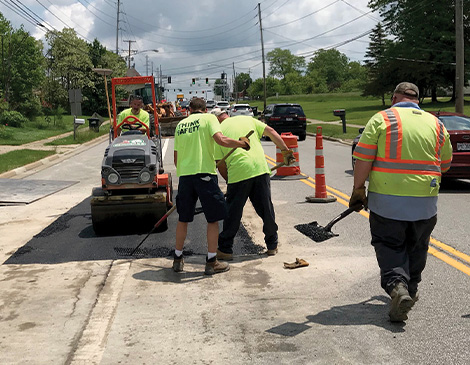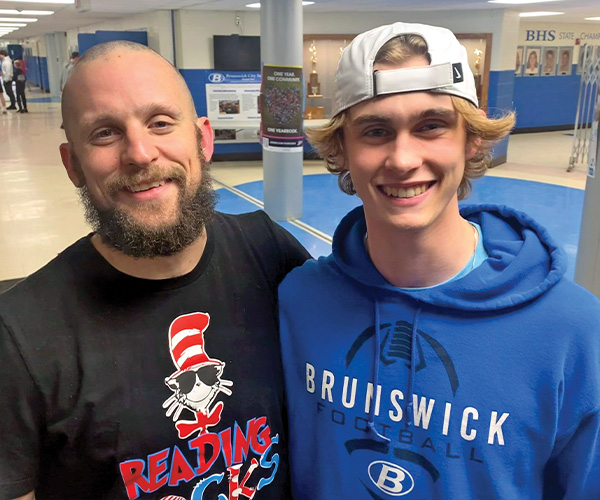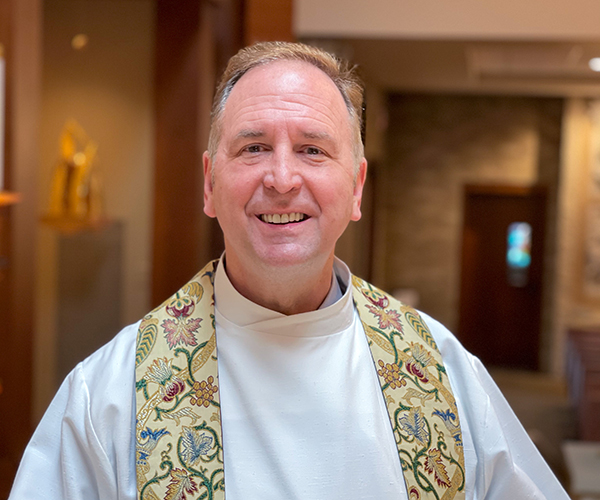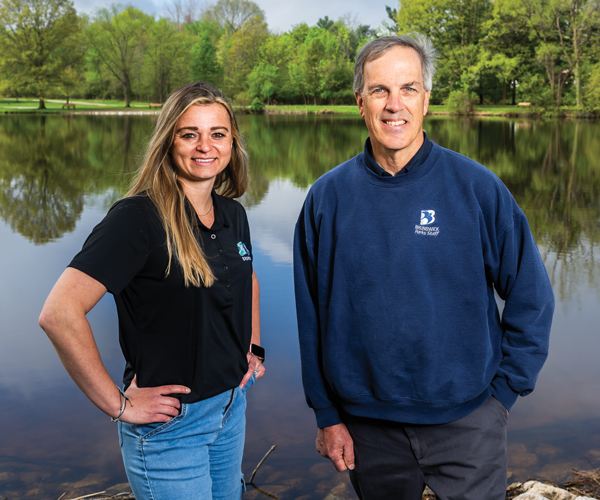We’ve all been there — driving along a roadway only to notice a pothole a moment too late. Then, “thud.” Hitting a Northeast Ohio pothole isn’t much fun, can impact your car’s alignment and destroy a tire or even cause an accident.
Fortunately, the City of Brunswick’s Public Service Department (Service and Streets) has those craters covered. Regular patch work and excellent resurfacing and roadway construction projects (most often in conjunction with a specialized outside contractor) make that work commute and trip to the grocery store much smoother.
“The road conditions are so much better than they were five years ago,” says Public Service Director Paul Barnett, who has been with the city for eight years. He was previously employed as Akron’s public works manager for 18 years and as assistant director of public works for the City of Cleveland for two years.
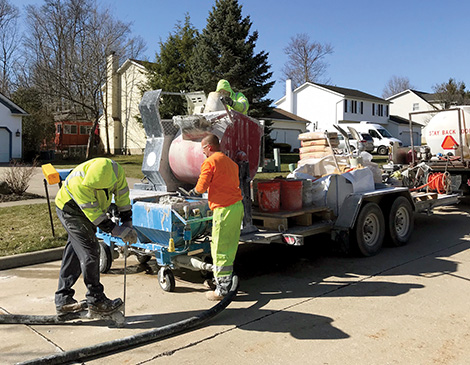
Filling a Hole
Barnett credits a piece of equipment called a DuraPatcher, purchased by the city four years ago, for much of that improvement. The DuraPatcher cleans a pothole area, applies a tack coat and sprays emulsion/aggregate mix into the pothole.
Barnett says the success rate to repair a pothole with DuraPatcher is 80% compared to 30% with a cold patch and 40% with a hot asphalt mix and lasts much longer. It is used on roads all summer long. You’ll know it when you see a road worker following a truck with a wand repairing roads.
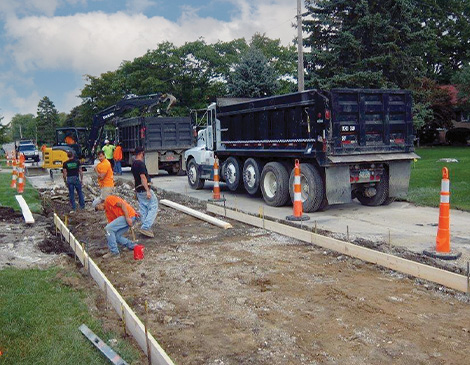
Support for Services
But that equipment is just one reason why driving in Brunswick has been more pleasant in recent years. Barnett also says the city and its residents are committed to financially supporting the maintenance of roadways (about 350 miles of pavement) within the community.
However, some of that support may be coming to an end. Nearly a decade ago, Brunswick voters approved a 10-year, 1.2-mill roadway levy that covers Jan.1, 2014 through Dec. 31, 2023. The levy resulted in residents paying $3.50 per month per $100,000 valuation of a home.
“I anticipate we will go to voters with some sort of roadway levy in 2023. This levy could only be used on residential streets, not state routes or major arterial roads,” explains Barnett, whose department is staffed with 13 workers.
The current roadway levy provided $850,000 a year in revenue. But that works out to about “rebuilding the roadway only once every 240 years,” according to Barnett. “It’s not a lot of money. So, we use that money and leverage it against state funding projects. We get grants at every opportunity,” he adds, noting that this funding is also supplemented with some income tax money.
The director also considers the department to be understaffed of full-time employees. There is one service worker for every 2,770 residents. However, Barnett believes that is a tradeoff. Fewer employees compared to neighboring cities means “more money for roadway projects,” he says, and less that must be spent on salaries. “A lot of people move to Brunswick because of the lower taxes,” he notes.
Projects on the Horizon
Brunswick’s 2023 major asphalt and concrete road repair programs began in June. Projects include roads in the Old Mill Village and Mesa Grande subdivisions. Spot concrete panel replacement work will also be completed across the city. Yearly roadwork projects were originally spread throughout the community. But Barnett says a rotating schedule between city wards makes more sense logistically and financially.
Also expect to see the $7 million Pearl Road (U.S. 42) resurfacing project to be fully completed in November. Phase 1 (north of state Route 303) was finished in 2022. Phase 2 (the intersection of 303 and 42 and south to the city line) should be done this fall if materials (primarily concrete) are available and the weather cooperates, says Barnett. The project is being administered by the Ohio Department of Transportation.
Winter’s Coming
Later this year, the department will tackle ice and snow removal on Brunswick’s roads. The city uses two different types of salt applications depending on temperatures. Last year, 3,000 tons of salt were used (an average yearly amount) at $50 a ton. The Service Department also does slab jacking, which Barnett describes as “pressure injecting grout under a roadway slab to raise it when settlement occurs.”
More Than Road Repairs
Maintaining roads falls under this department, of course, but the list of other responsibilities — directly and indirectly related to roadways — is staggering.
“Stormwater work, and everything related to it, is a big thing in Brunswick,” notes Barnett. “And that is something else that is much better than it used to be. It used to be whenever we got more than a quarter of an inch of rain, we would have to call in crews on overtime to clean out manhole covers and pipes because backups were causing flooding. We have good maintenance programs in place now. That stormwater work includes all ditches and storm sewers.”
The work can be dangerous. “Most people don’t realize that public works employees are classified as first responders,” Barnett says.
“If a storm sewer is 24 inches or larger in diameter, we will send guys into the pipes to identify leaks or bad joints with cameras and repair it from the inside,” says Barnett. “The guys go in on something that looks like a skateboard with a harness on them, and they have to scoot down the pipe. We have to go through a whole safety protocol for confined space entry when we do that. It’s a lot of training, and we monitor the air so they have a good quality of air while in the storm pipe.” (And yes, Barnett’s crew has even rescued cats and ducks stuck in drainage pipes.)
In addition, 19 retention basins and Brunswick Lake Dam are maintained by the department.
“We also sweep curbed streets twice a year for environmental reasons. Everything that falls into the street goes into the stormwater system and makes its way into our local creeks and rivers. If we can capture the debris before it gets into the stormwater system, then everyone is better off,” Barnett points out.
And did we mention additional department services include traffic light malfunctions, branch chipping and leaf collection, as well as the maintenance of two cemeteries?
“We basically do whatever the city needs,” says Barnett.
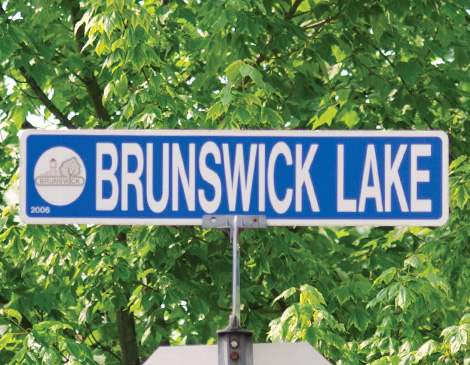
What's in a Name?
Brunswick’s street names range from Abington Court to Yorkshire Drive. In between, there are a few intriguing names that include Spyglass Hill Drive, Hobbits Way and Uxbridge Drive.
Like most American cities, Brunswick’s street names include numbers (like the community’s Township Road 103), trees and flowers, famous places, U.S. presidents, first names, colleges, descriptions and themes such as golf courses. The most popular street name in America is Second Street, according to the U.S. Census Bureau, but Brunswick doesn’t have one.
The city does have streets named after:
Plants — Acorn Circle, Apple Hill Court, Blueberry Hill Drive, Cherry Lane, Lily Court and Sunflower Drive
Places — Windsor Drive, Manhattan Avenue and Sleepy Hollow Road
Presidents — Lincoln Drive, Wilson Street and Garfield Avenue
First Names — Sheri Drive, Ruth Drive, Sandra Drive, Gary Boulevard and James Boulevard
Descriptive Names — Hilltop Drive, Marsh Way, Willow Grove Circle and Rolling Hills Drive
Some people would like to see new streets named after more Brunswick founding families or early or influential residents (maybe Freese or Deming?). But most streets in new housing subdivisions are named by developers who often select their children’s or spouse’s names.
Street names in most communities must be approved by the county in which they are located. Also, not all communities follow strict definitions of roadway names and classifications anymore.
Historically, American roadways were classified as:
Road — general term for any thruway that connects two points
Street — public road with buildings on both sides
Drive — originally a roadway that wound around natural landmarks or topography, but used almost anywhere now
Boulevard — road that funnels
traffic away from residential and commercial streets
Way — small side street that splits off from another road
Place or Court — often a dead end; courts are often cul-de-sacs
Lane — narrow, country road, but now found in urban areas as well
Did You Know?
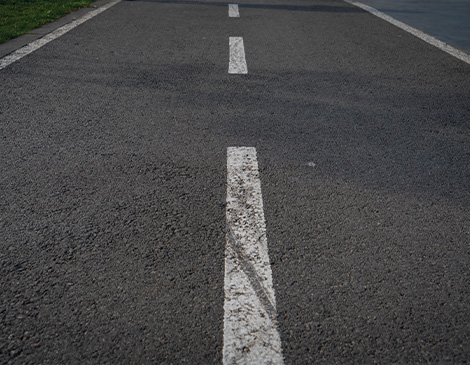
Lines and Lanes
Several studies have shown that most people think those dashed road stripes that we whiz by in our vehicles are each about 2 feet long. But, in reality, most are 10 feet long. The reason for the error is thought to be our speed when passing them and the illusion that creates.
The story of striping American roadways is, like many early historical records, somewhat conflicting. One version is that in 1911, the chairman of the Wayne County Board of Roads in Michigan was following a leaking milk truck that left a white line down the middle of the road. He liked the idea of dividing a roadway down the middle to separate two-way traffic.
Another version gives credit to a California physician named June McCarroll, who is said to have painted the first white line on a roadway as a safety measure in 1917. Supposedly, she was inspired by being almost run off the road by a large truck and wanted others to be safe.
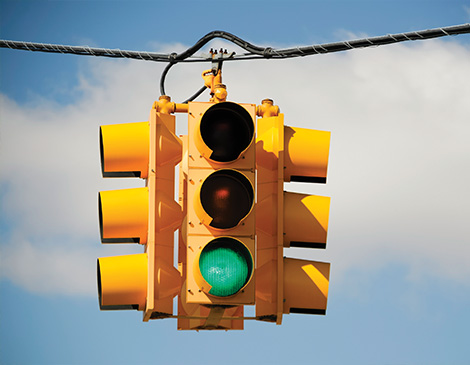
Let There Be Lights
Think about traffic lights for a moment. How big do you think they are? Many people tend to underestimate the size. The most popular traffic light is the standard three-light pattern with 8-inch lenses. Each lens is the size of an average person’s head. Stacked on top of each other, they make traffic lights 30 inches tall. But there are larger ones, usually used in bigger cities, that are 42 inches tall and weigh 50 pounds. Paul Barnett, Services and Streets director for the City of Brunswick, reports that some traffic lights can even be 5 feet tall. Fun fact: The first traffic light was invented in Cleveland.
Considering their size, it makes you wonder if you want to drive under one of those monsters if it’s swaying in a thunderstorm! That’s why we need public service departments like Brunswick’s.

